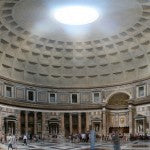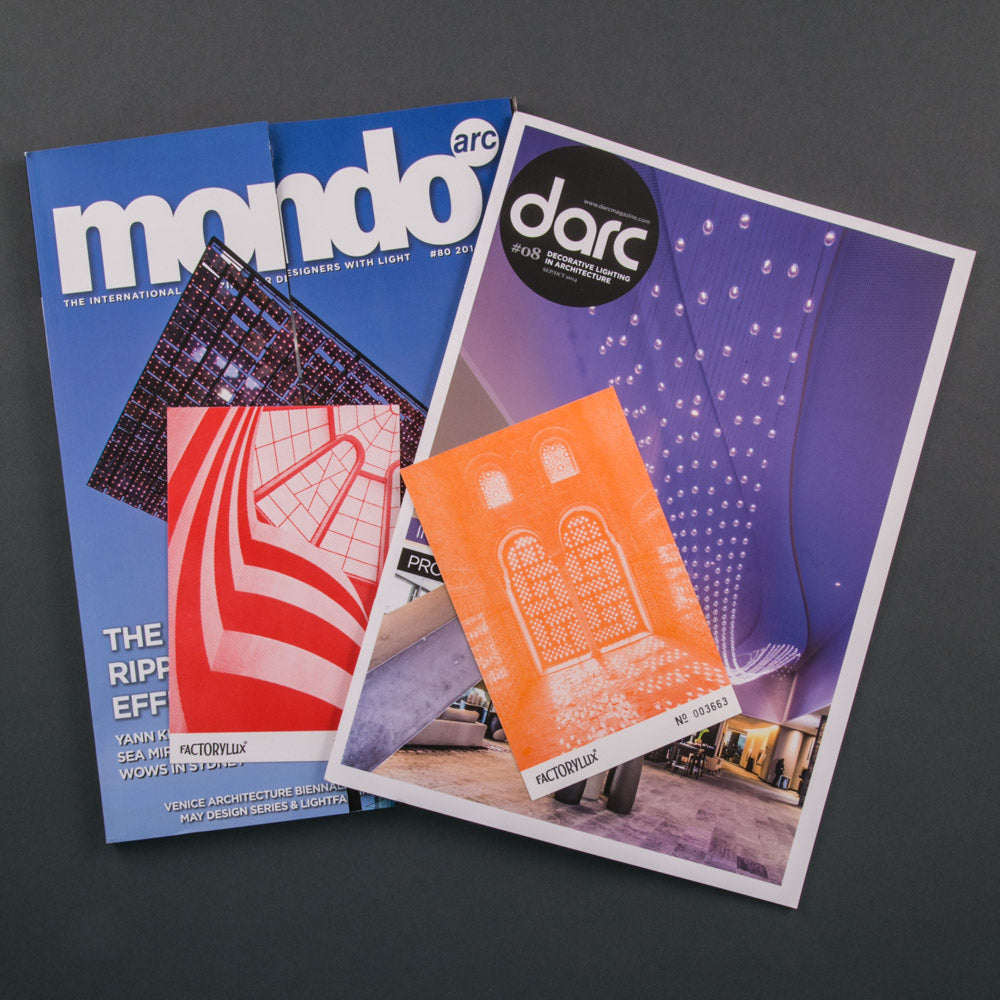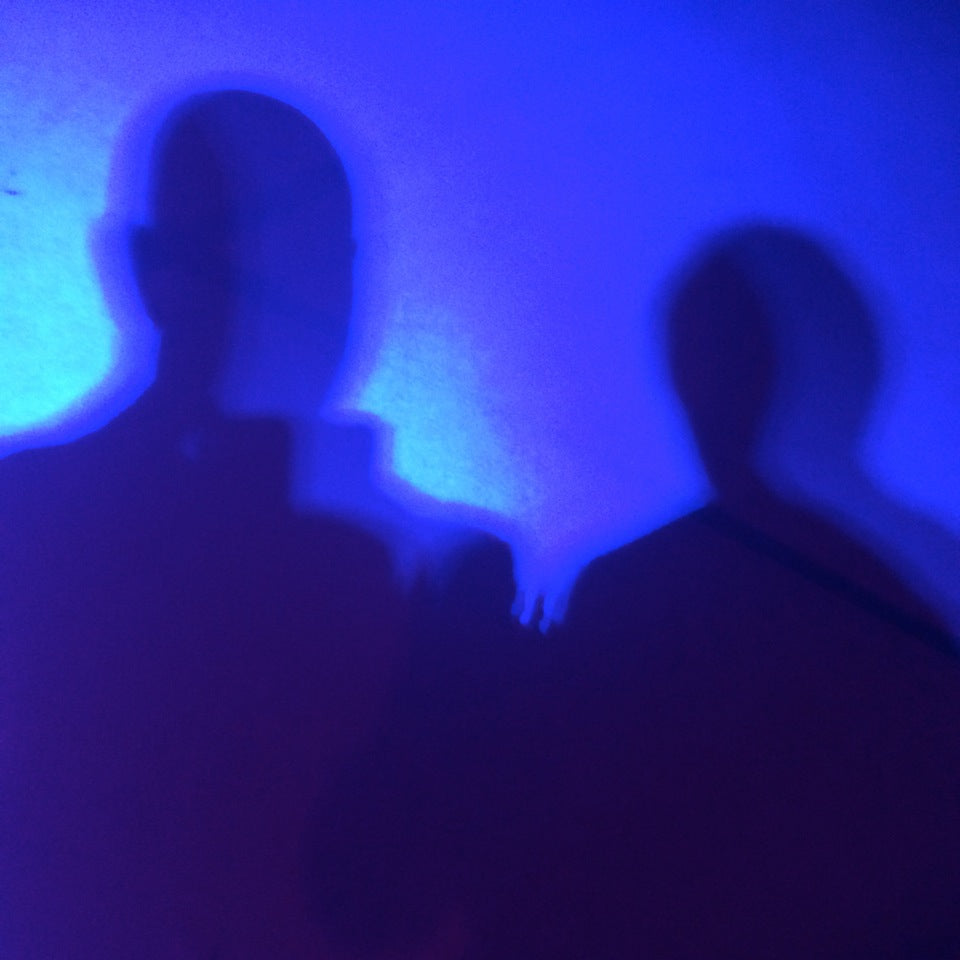The half-way point has arrived in the Factorylux 'Natural Light In Architecture' postcard series, curated by Light Collective and exclusively distributed by mondo*arc and darc magazines. It's the perfect moment for a quick retrospective...



 The series of cards, though only half way through, is already an inspirational look at what can be achieved with natural light and challenges our pre-conceived notion that 'lighting design' is all about artificial light and not the ways in which, and the importance of, natural light in creating great architecture. As Louis Kahn said: "A room is not a room without natural light. Every building must have its own soul." Here's a quick look at the architecture covered so far:
The series of cards, though only half way through, is already an inspirational look at what can be achieved with natural light and challenges our pre-conceived notion that 'lighting design' is all about artificial light and not the ways in which, and the importance of, natural light in creating great architecture. As Louis Kahn said: "A room is not a room without natural light. Every building must have its own soul." Here's a quick look at the architecture covered so far:












Background to the project:
Way back in sunny July, Factorylux invited Light Collective - Sharon Stammers & Martin Lupton - to curate an exclusive series of collectable postcards. A single postcard would be distributed within each and every copy of mondo*arc and darc - the international magazines for architectural lighting and lighting designers - for the whole of the following year. The rationale behind the series and each choice of the image and architecture within is explored by Light Collective in a special column in each edition. The 'top secret' code behind the colourway evolution (R-O-Y-G-B-I-V) was cracked on twitter by @GavriiLux just three cards in.A powerful collaboration:
Light Collective's raison d'être is to inspire and educate people about light. mondo*arc and darc reach a global audience of lighting design professionals. Factorylux is a lighting manufacturer with a creative approach who invested the necessary time, money and spirit to bring the project to life. The cards are beautifully craft printed by Prelogram, using traditional platen presses to give the images real depth and definition. If you've not received the cards or have a gap in the collection, get in touch (media@urbancottageindustries.com) and we'll issue you replacements.The story so far:



 The series of cards, though only half way through, is already an inspirational look at what can be achieved with natural light and challenges our pre-conceived notion that 'lighting design' is all about artificial light and not the ways in which, and the importance of, natural light in creating great architecture. As Louis Kahn said: "A room is not a room without natural light. Every building must have its own soul." Here's a quick look at the architecture covered so far:
The series of cards, though only half way through, is already an inspirational look at what can be achieved with natural light and challenges our pre-conceived notion that 'lighting design' is all about artificial light and not the ways in which, and the importance of, natural light in creating great architecture. As Louis Kahn said: "A room is not a room without natural light. Every building must have its own soul." Here's a quick look at the architecture covered so far:
Postcard #1 - The Guggenheim Museum, New York City, USA
Commissioned in 1943 and designed by Frank Lloyd Wright, this landmark building took 16 years to complete. Rather than separate floors of exhibits, the Guggenheim has a continuous gentle ramp which visitors walk down, viewing the works of art as they descend. The first card in the series is a striking image showing the profile of the ramp and a segment of the skylight which allows natural light to flood the interior of the Guggenheim.


Postcard #2 - The Alhambra, Granada, Spain
The Alhambra was originally constructed as a fortress in the 9th century and rebuilt as a palace in the 14th century during the Moorish rule of the Iberian peninsula. The complex, now a UNESCO world heritage site, contains the architectural and decorative elements which characterise the Moorish style: columned arcades, fountains & pools, arabesques and calligraphy. The second card in the series shows the intricate window screens and the patterns of sunlight which illuminate arabesque interiors at the Alhambra Palace.


Postcard #3 - The Temple of Karnak, Luxor, Egypt
The Temple of Karnak, another UNESCO world heritage site, is a complex of temples and building constructed in Egypt from approximately 2,000 BC. The third card in the series shows the pillars in the Great Hypostyle Hall constructed around 1250 BC. The Great Hall was originally roofed, but its collapse allows the light to fall along the line of the columns highlighting the immense decorated columns.


Postcard #4 - The Pantheon, Rome, Italy
The Pantheon was completed around 125 AD and consists of a portico Corinthian columns in granite which leads to the rotunda which has a concrete dome - still the largest unreinforced concrete dome almost two millennia after it was constructed. The dome has a central opening - one of the finest examples of an oculus - which has a diameter of 8.2 metres which lights the interior of the building and keeps it cool in summer. The fourth card in the series shows the interior of the dome and the shaft of sunlight from the oculus.


Postcard production:
The images from the cards are sourced from the Corbis Collection - one of the world's greatest photography archives. The images are reproduced using the classic halftone process. The craft print process involves reproducing the images using platen presses which date from the 1950s. After the image is created, each print card is individually numbered and embossed.Feedback, so far:
- ‘Impressive’, Theo, NDYLIGHT
- 'I am not going to give them away’ Andrew, Cundall
- 'We are proud to have one of the collector’s items’ Carla, Lichtvison
- 'They are great’, Bryony, DPA
- 'Someone else is taking them before I see them’ Paul, Light Bureau
- ‘I put them in the bin with the rest of the inserts' Tapio, Lighting Design Collective



Leave a comment
This site is protected by hCaptcha and the hCaptcha Privacy Policy and Terms of Service apply.